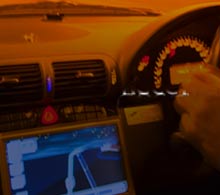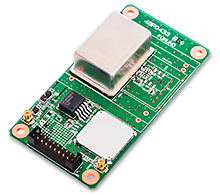Articles for ITS market From Infotainment to ITS, the competitive area is spreading in the car big data industry.
Why is AGL (Automotive Grade Linux) important in the automotive industry?
"Ladies and gentlemen, there is a big announcement today!"
AGL's director, Mr. Dan Carty, was all smiles on the stage.
The announcement was Toyota would do the initial mass production with their world strategic car, Camry, by the AGL-based software. AGL is an abbreviation for Automotive Grade Linux, a Linux Foundation project aimed at standardizing on-board software by open source. Since TOYOTA led the way by starting the AGL project, the annual developer conference is being held in Japan and this year it was from May 31th to June 2nd in Tokyo. I am constantly covering AGL in the United States as well, and the developer conference because I think AGL is in an important development in the area of large data requirements in the car industry.
The AGL initiative was launched in the 2010s, while concrete discussions were started in 2013 and its history is not very long. Originally, AGL was suggested by a German and an American car manufacture. That's GENVIV. GENIVI discusses the concept of big data quite often, but they do not reach the stage where software is actually incorporated into on-board equipment, in fact, their activities are inactive.
Both AGL and GENIVI started with the original purpose to make the software programming become a standard with free open source in infotainment field. This is obviously a countermeasure against the business strategy by Google (Alphabet).
AGL is adopted by Toyota Camry for the world first mass-produced application
 Inside the test car of Toyota Lexus 450h with AGL mounted.
Inside the test car of Toyota Lexus 450h with AGL mounted.
 Toyota's advanced vehicle-to-vehicle communication, roadside-to-vehicle communication, and ADAS.
Toyota's advanced vehicle-to-vehicle communication, roadside-to-vehicle communication, and ADAS.
As well-known, Google has incorporated the Android OS (Operating System) in mobile phones and Google and Apple are the two largest OS supplier in the current smartphone. Android Auto (Android Auto) is the cooperation of the Android smartphone and OBE (on-board equipment). As a stepping stone, Google is aiming to make the Android become the de facto standard in OBE. Most recently the VW group and others announced expansion to use the Android OS in their vehicles.
AGL has been keeping Google’s market monopolization in check because they think the future way of in-vehicle OS should mainly be supplied by automobile manufacturers, automobile parts manufacturers and arithmetic device manufacturers such as semiconductor companies that actually commercialize software and hardware. As a result, TOYOTA Camry was selected as the world's first mass-produced car for the platform created based on consultation of companies participating in AGL.
AGL's argumention to the ADAS extension and the gap between the current situation
After the announcement, AGL responded to the press. Many writers including myself, asked for the future of AGL. AGL started mass production in about three years from the start of production and since last year AGL has begun to mention that AGL system would be expanded to the area of the car centricity related to the motor performance such as ADAS (Advanced Drive Assistance System). However, regarding this question, I had an impression that AGL was not as aggressive as it was previously, they said, "It is necessary to reconsider car centricity such as autonomous driving because we think we should concentrate to the infotainment area." The reason for this is that the competitive environment in the big data area in ITS (Intelligent Transport Systems) is rapidly changing while the movement toward practical application of the autonomous driving is accelerating in various countries around the world.
What happens to the aggregation of big data in ITS?
In the past, the idea of fusing was mainstream on analysis of big data in ITS based on VICS of traffic information system, location information in GPS, traveling situation of car in Japan, data in CAN (controller area network) connected to onboard CPU. People have tried to improve the accuracy of the big data analysis in ITS by improving communication environments such as inter-vehicle communication (V2V), road-to-vehicle communication (V2I), and inter-vehicle communication (P2V). However, with the advent of image recognition technology, based on artificial intelligence (AI) and deep learning, various stakeholders have emerged in the relationship between ITS and big data. In the past one or two years, the major semiconductor manufactures have invested huge R & D expenditures on this technology, and the de facto standard battle for hardware and software is intensifying. Even in highly accurate 3D (three dimensional) maps, the battle behind the scenes is active between Germany, the United States, and Japan government.
In the automobile industry, it is often said that big data is the key to next-generation technology. The word of “big data” is not defined and understanding in each industry is somewhat different. However, IoT (Internet of things), which is a concept crossing the industry, there is no doubt that it should be used seriously as a next-generation business strategy. In the automotive industry, which is entering a turbulent period, the workers in the automotive industry should now ask themselves, "What is the big data in the car?"
Writer introduction

Mr. Kenji Momota Automotive journalist
His major is the world automotive industry and he is also familiar with the energy industry, IT and the aging society problem as the related fields. He acts around the world based in Japan and USA and writes for the general magazines, the technology journals and the automotive related media etc.
He is also commentator of motor race and world's motor show on TV program based on his career of the driver of Indy Racing League and NASCAR. In recent years, he has been covering about a paradigm shift from developed countries to developing countries, the motorized vehicle like EV and the telematics.
FURUNO ITS Journal
Click here for the latest articles after 2022 (in Japanese)2022
- The "realistic" self-driving roadmap shown by the Japanese government and a hands-on report on the latest Subaru EyeSight X
- Will FCVs (Fuel Cell Vehicles) Become Popular? ~New Movement in Toyota and Honda~
- The 'Complete' online sales of new cars start in Japan. Will this new way of buying cars take root?
- Many Firsts! On-Site Report from Tokyo Auto Salon 2022 - The author, who knows what goes on behind the scenes, looks back on 40 years of history. -
2021
- "Moving toward zero traffic fatalities for four-wheeled and two-wheeled vehicles globally in 2050" ~Experience on Honda's latest safety technologies~
- Tsuneishi Shipbuilding's building and DX, an exclusive visit to the main factory
- Japan's Smart City: New Moves toward Practical Use
- When will self-driving buses (service cars) be put to "full-scale" practical use?
- Utilization vehicle data during disasters
- Toyota-led Connected Technology to Transform Commercial Vehicle Business -From light trucks to large trucks and buses-
- Toyota enters the connected car "Personalization" business
- Japanese automakers' carbon-neutral strategies swept up in ESG investment
- Drive experience of the latest autonomous vehicle models and advanced driving support systems
- Will carbon neutrality accelerate the trend to strengthen LCA (Life Cycle Assessment)?
- Semiconductor shortage exposes realities of the automotive industry
- Online Autonomous Driving Contest Enhancing development of Human Resources
2020
- What happens to CASE when gas cars are banned in Japan?
- When will Flying Cars be launched?
- Expectation vs. reality:Autonomous Driving in Japan
- V2X, Becoming increasingly important in autonomous driving
- Technology of Subaru “EyeSight X”
- Lifestyle-oriented French cars gain popularity in Japan
- Human-oriented smart cities are wanted
- MaaS and CASE, how would automotive industry change after COVID-19?
- The beginning of virtualization era, triggered by COVID-19
- Trend of EV shift and consumer demands
- TOYOTA Press conference about ADAS - Releasing algorithm for "sudden acceleration suppression during attempted sudden acceleration" free of charge -
- The Japanese automotive industry in 2020 - 3 turning points -
- "Using a smartphone while driving" and "Level 3 automated driving"
2019
- Motor show business model is at a turning point - Tokyo Motor Show Report -
- Commercialization and monetization of MaaS - ITS World Congress Singapore Report -
- Android Automotive pays attention to V2X - Report from the Frankfurt Motor Show 2019 in Germany -
- Automobile Distribution Revolution and DCM (Data Communication Module)
- Connected business potential and newly proposed "eMaaS" by Honda
- 5G services for practical use are multiplying
- Connectivity technologies attracting attention due to frequent traffic accidents
- Shanghai Motor Show report -SUV, EV, Automated car & 5G-
- Drone Business roadmap and updates to Michibiki (Quasi-Zenith Satellite System)
- MaaS (Mobility as a Service) "town development." Full-scale promotion for a national project
- CES organizer states "Data Period in 2020s." Transformation of the Automotive Industry in CES, US "-CES2019 Report-"
- "Return to Origin" directed towards the age of change, automatic operation and connectivity
2018
- New proposal for Private Car Automated Driving Level and other Hot 5G Technology Topics
- Standardized EV charging infrastructure concerns in Europe, US, Japan and China - Kobe EVS 31 field report -
- Touring a pure car carrier and a test drive of the latest hybrid car
- Planning stage products are exhibited at the newly established visualized mobility service "TOYOTA MOBILITY SHOWROOM".
- Potential “Community Car-share” program promoted by local residents
- CES Asia Report 2108
- Companies attempt new Vehicle-to-Infrastructure communications, including traffic volume measurements and vehicle positioning. -ITS Asia Pacific Forum in Fukuoka-
- Geneva show in Switzerland. Flying cars and MaaS (Mobility as a Service) were hot topics.
- EV (Electric Vehicle) proposals by country
- MaaS competition through service mobilization, M & A and technical field collaboration is accelerating. - The CES 2018 Report -
2017
- Big data’s initiative and fight for the automotive industry. Cooperation among companies becomes increasingly important.
- Connected car and road-to-vehicle communication automatic operation
- ETC (Electronic Toll Collection) and ETC2.0. Current situation and projected future
- Rapid development of sharing economy
- Germany is first to recognize level 3 automated driving
- ITS EU 2017 Field Reports -Automatic Operation and the eCall-
- From Infotainment to ITS, the competitive area is spreading in the car big data industry.
- GTC (GPU Technology Conference) Report and the de facto standardization of AI (artificial intelligence)
- Renesas' new challenge! "e-AI Solution" and "Renesas Autonomy"
- The Automobile industry is shifting from a manufacturing industry to a service industry.
- The movement toward accident countermeasures for aging drivers in Japan
- Fusion of ride sharing and fully automated driving is advancing in the USA.
2016
- Overview of the Quasi-Zenith Satellite System (QZSS) and advancements toward full-scale practical use including the Tokyo Olympic Games - G-space EXPO 2016 report-
- Japan’s automated driving project "SIP-adus" will be a large demonstration experiment.
- The International Home Care & Rehabilitation Exhibition. There were many car manufactures with exhibits booths at this show.
- Japanese car manufacturers starting to concentrate on strengthening the ADAS system
- A new movement of legislation for autonomous cars
- Cyber Security and “AGL”, the new OS for automotive are hot topics in the connected car industry
- “High precision 3D map” the key future of autonomous car and pedestrian dead reckoning
- Chinese “BAT” is accelerating their business in the EV (Electric Vehicle) market
- Tesla's original connection to Taiwan and the new transportation system technologies.
- "The main topic" of the Geneva Motor Show was how to strengthen "pedestrian protection"
- The probe data business is getting more competitive
- Reporting directly from the 2016 CES show "Data services will soon become the main revenue source of automotive industry"
2015
- Do the automated driving systems need the GNSS (Global Navigation Satellite System) ?
- ETC Version 2.0 is coming soon. A new service was announced at the Tokyo Motor Show and the possibility that is could be used as a device for older drivers.
- "Connected Horizon" and "eHorizon". Germany's leading parts supplier accelerates strengthening of "Big Data" for business



 Director of AGL speaking at Linux Summit.
Director of AGL speaking at Linux Summit. Inside of a data collection car to create a highly accurate 3D (three dimensional) map of Here, Germany. 2 TB of hardware is installed as a storage medium.
Inside of a data collection car to create a highly accurate 3D (three dimensional) map of Here, Germany. 2 TB of hardware is installed as a storage medium. GPS/GNSS Receiver&Chips and Modules (positioning and timing)
GPS/GNSS Receiver&Chips and Modules (positioning and timing)